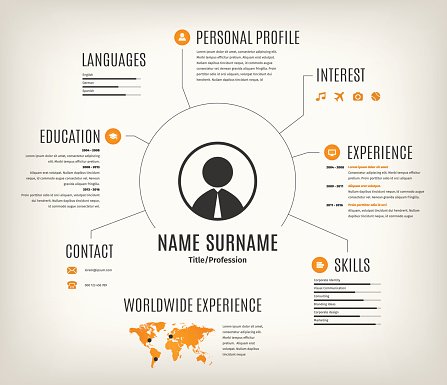You’re a graphic designer. You’re smart. You’re innovative. You create innovative ads, item packaging, and websites every day. However, when it comes to creating a resume, you’re baffled.
How do you make a graphic designer resume, anyway? Is it precisely like a resume for any other profession? Do you connect your portfolio with the resume? Or do you consist of the links inside? There’s a lot of things that are unclear when it pertains to making a graphic designer resume, which highlights this post.
After all, the hiring manager will reconsider working with a graphic designer who’s resume isn’t well-formatted. In 2020, the most common resume format is a lot more about your abilities instead of professional experience.
An Ideal Resume Sample
As the name suggests, a mixed resume is a mix between “Functional” and “Reverse-Chronological.” Significance, it focuses both on abilities AND work experience. You can use a mixed resume if you have a great deal of work experience or changing markets. When you have actually selected the format, you need to get your resume layout right.
Do use Ubuntu, Roboto, and do not use Comic Sans. Utilize a font style size of 11-12pt for regular text and 14-16pt for headers. Do not review the 1-page limitation
As a designer, you have a lot more freedom on what sort of resume design you go with.
You have to experiment with the format longer than it actually takes you to complete the contents. Then, you decide to make a single, little layout modification, and BAM! Your entire resume layout breaks down. Want to make your life simpler? Use a graphic designer resume design template. The primary sections in a graphic designer resume are contact information, work experience, portfolio, education, and skills. If you want your resume to stand apart more, you can try optional sections such as awards & certifications, projects, languages, and Interests or Hobbies.
Double-check, triple-check all the information you have inputted into your resume. One little tiny can really mess up your chances. Ensure to use a professional e-mail address ([email protected]), and prevent that e-mail you developed back in 5th grade ([email protected]).
You can’t anticipate them to check out all 200 resumes end-to-end. So, if the recruiter does not see that you’re pertinent for the task in a single glance, your resume will not even be read.
Rather of stating:” Charged with designing client companies …” Choose:” Developed 15+ client business websites from start to complete.”
So, what’s the difference between the two? The 2nd one is more specific. You understand exactly what the person did, and you can say that they’re trusted. The first example, on the other hand, is too generic.
Since you desire your resume or CV to stand apart, we ‘d suggest utilizing a few of these power words to make your obligations and accomplishments stand out: Conceptualized, Designed, Devised, Determined, Drafted, Formulated, Introduced, Initiated, Launched, and Originated.
Envision this: you’re the finest graphic designer worldwide and your resume is remarkable. BUT, you still get turned down, due to the fact that you didn’t mention that you understand HTML and CSS in your resume, which was one of the primary requirements. Almost anyone can say that they’re “creative,” but not a lot of individuals are experts at InDesign.
Now, Go Make Your Resume Great!
And if your resume looks the very same as everyone else’s, that’s where you fail. If you’re already a great match for the job in terms of abilities and experiences, these areas might end up being the deciding aspect that gets you hired, and makes you stand apart from the rest.
Did you win a style competition throughout university? Do you have a lot of online courses finished on Coursera? Whichever the case may be, absolutely discuss all of them in your resume! That’s exactly what your next employer likes to hear.

